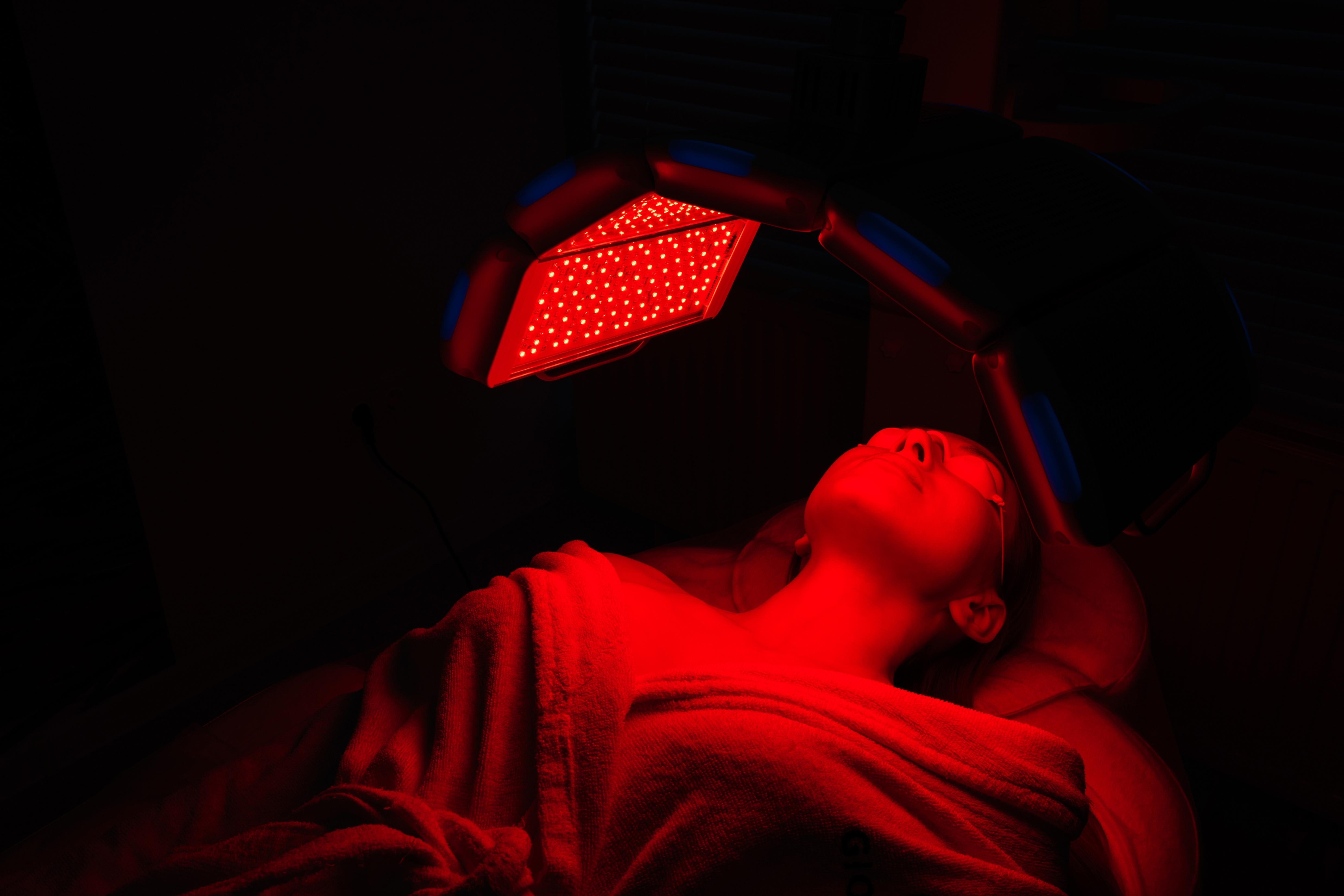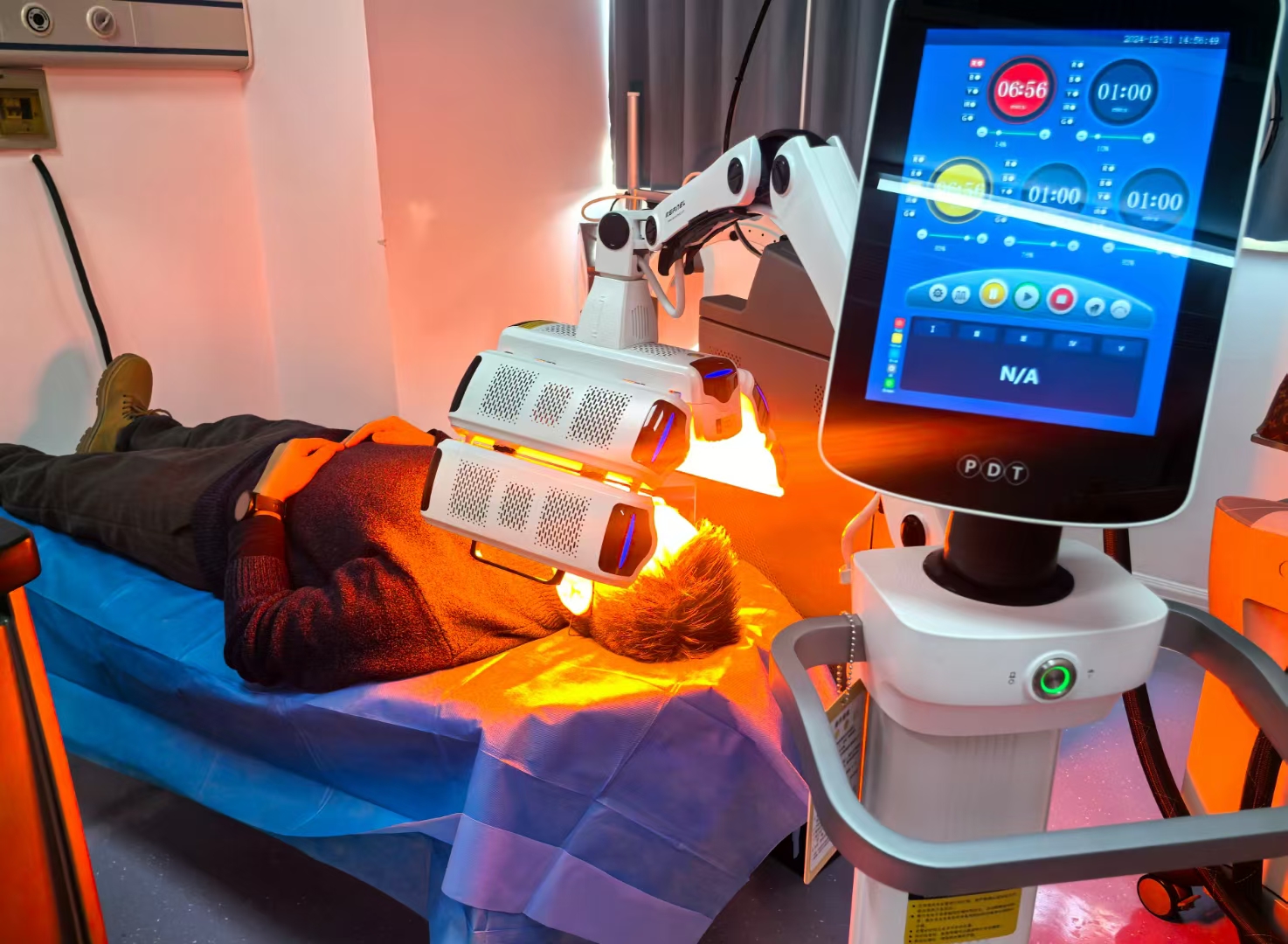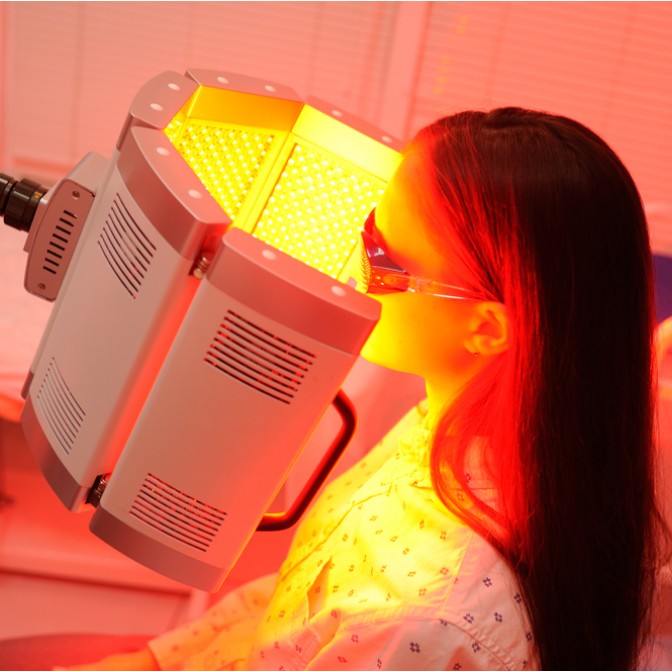
Expert Consensus 2025: Clinical Applications of Red, Blue, and Yellow Light Therapy in Dermatology
2025-04-30 17:07Clinical Applications of Red, Blue, and Yellow Light Therapy: 2025 Expert Consensus
Red, blue, and yellow light therapy is a widely used form of low-intensity phototherapy in dermatology. With advances in photomedicine, safer and more effective applications of red, blue, and yellow light have gained widespread clinical use in conditions such as acne, androgenetic alopecia, skin wounds, and herpes zoster.
Theoretical Foundations of Red, Blue, and Yellow Light Therapy
Overview of Red, Blue, and Yellow Light
Red (625–700 nm), blue (400–500 nm), and yellow (570–595 nm) light fall within the visible light spectrum. In clinical dermatology, commonly used wavelengths are 630–670 nm for red light, 415–417 nm for blue light, and 590–595 nm for yellow light. The development of helium-neon and semiconductor lasers between 1960 and 1962 laid the groundwork for the clinical application of red light.
Mechanisms of Action
When red, blue, and yellow light are applied to human tissue, they produce a range of immune and metabolic effects collectively referred to as photobiomodulation. This mechanism differs from high-intensity laser treatments that rely on thermal or ablative effects. Photobiomodulation is dose-dependent—there exists a biphasic dose-response, where an optimal range of power density and exposure time stimulates tissue, while excessive doses may inhibit physiological function. Hence, appropriate dosing is essential for therapeutic outcomes.
Mechanisms and Biological Effects
Red Light
Red light demonstrates excellent tissue penetration, reaching approximately 5 mm into the dermis and skin appendages. Its primary target is cytochrome c oxidase in the mitochondrial inner membrane. Red light can dissociate nitric oxide from this enzyme complex, increasing intracellular nitric oxide, ATP production, and reactive oxygen species. This cascade promotes vasodilation and local circulation, while the resulting biochemical changes induce multiple biological effects:
Anti-inflammatory response
Wound healing promotion
Hair growth stimulation
Reduction of skin fibrosis
Restoration of the skin barrier
Alleviation of photoaging and UV-induced erythema
Reduction of melanin production
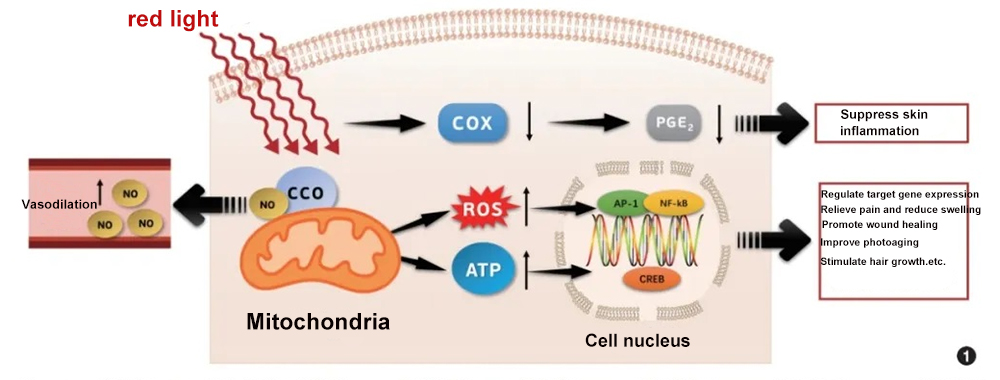
Illustration: Mechanism of Red Light Photobiomodulation on Human Skin Tissue
Blue Light
Blue light penetrates approximately 1 mm into the skin and is primarily used in dermatology for its endogenous photodynamic antibacterial effects, followed by its photobiomodulatory effects.
(1) Antibacterial Action:
Blue light activates endogenous photosensitizers such as porphyrins and flavins within pathogens, generating reactive oxygen species (ROS) that destroy microorganisms like Cutibacterium acnes, MRSA, and Pseudomonas aeruginosa. It can also disrupt bacterial membranes and alter intracellular pH to inhibit proliferation. Unlike antibiotics, blue light poses no systemic side effects and does not promote antibiotic resistance.
(2) Photobiomodulation:
Blue light activates various chromophores such as opsins, tryptophan, cytochromes, and cryptochromes. This activation stimulates transient receptor potential (TRP) channels, increases intracellular calcium, and triggers mitochondrial ROS and ATP production, yielding anti-inflammatory effects and improving acne lesions. High-energy blue light can suppress fibroblast proliferation and collagen synthesis, helping to mitigate skin fibrosis.
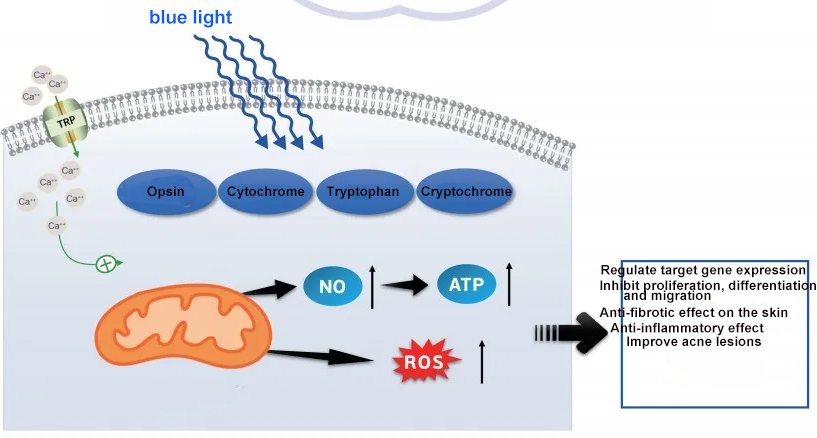
Illustration: Mechanism of Blue Light Photobiomodulation on Human Skin Tissue
Yellow Light
Yellow light penetrates the skin to a depth of 0.5–2 mm, targeting keratinocytes, melanocytes, and vascular endothelial cells within the epidermis and upper dermis. Though less studied than red or blue light, its mechanism is also based on photobiomodulation. Yellow light can:
Suppress skin inflammation
Promote tissue repair
Inhibit melanin production
It is used for conditions such as allergic dermatitis, seborrheic dermatitis, rosacea, photoaging, and melasma.
Clinical Protocols for Red, Blue, and Yellow Light Therapy
Acne Vulgaris
Red and blue LED light are effective for treating mild-to-moderate inflammatory acne. In a randomized trial by Li et al., red light showed a 50% clinical efficacy rate with 36.2% lesion improvement, while blue light achieved 35.71% efficacy and 30.7% lesion improvement. Mild dryness, peeling, and itching occurred in some patients in the blue light group. Both red and blue light may be used separately or sequentially, and as activating light sources in photodynamic therapy (PDT) for acne.
Recommended Protocol:
Red Light: 630±10 nm, 40–80 mW/cm², 40–100 J/cm²
Blue Light: 417±10 nm, 20–40 mW/cm², 20–50 J/cm²
Frequency: 2–3 sessions per week.
Sequenced Option: One red and one blue session per week, 3 days apart.
Course: 8–12 sessions, repeatable based on lesion improvement.
2. Wound Healing
Red light alone promotes healing of venous ulcers, diabetic foot ulcers, pressure sores, and surgical incisions. A randomized controlled study with 65 diabetic foot patients found significant ulcer size reduction after 4 and 8 weeks using helium-neon red light and infrared radiation, without adverse effects.
Recommended Protocol:
630–685 nm, 40–100 mW/cm², 40–100 J/cm²
Daily or alternate-day sessions, depending on wound progress
3. Herpes Zoster and Postherpetic Neuralgia
Recommended Protocol:
Red light (630±10 nm), 60–100 mW/cm², 100–200 J/cm²
Daily sessions
4. Photoaging
Red Light
630±10 nm, 40–80 mW/cm², 40–100 J/cm²
2–3 sessions per week
Yellow Light
590±10 nm, 20–40 mW/cm², 20–40 J/cm²
2–3 sessions per week
5. Melasma
Recommended Protocol:

